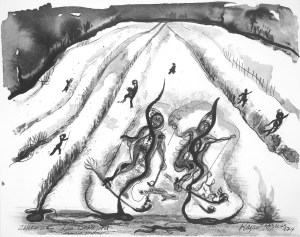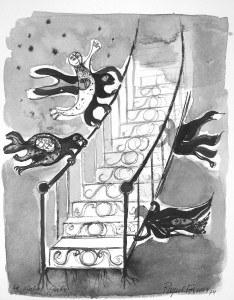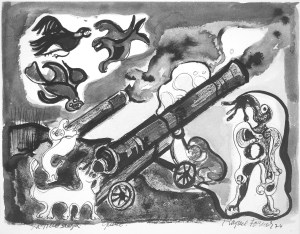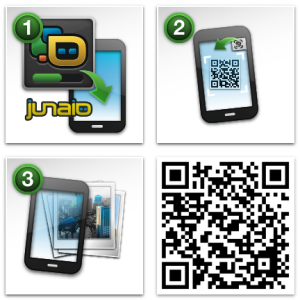Art and Technology: The Use of Augmented Reality in the Art Gallery
 An Argentine artist, Raquel Forner (1902-88) explored a range of humanist themes in her paintings, engaging such topics as the tragedy of the Spanish Civil and the fantasies of the Space Age. The Art Museum of the Americas (AMA) organized a solo exhibition of her work in 1957, and her mural Origin of a New Dimension (1982) is on view at the General Secretariat Building of the Organization of American States. Also in AMA’s permanent collection is one of her books, Astro-êtres à Québec (1976). Its twenty-four images highlight the artist’s surrealist style in their description of distorted and abstracted figures in black and white.
An Argentine artist, Raquel Forner (1902-88) explored a range of humanist themes in her paintings, engaging such topics as the tragedy of the Spanish Civil and the fantasies of the Space Age. The Art Museum of the Americas (AMA) organized a solo exhibition of her work in 1957, and her mural Origin of a New Dimension (1982) is on view at the General Secretariat Building of the Organization of American States. Also in AMA’s permanent collection is one of her books, Astro-êtres à Québec (1976). Its twenty-four images highlight the artist’s surrealist style in their description of distorted and abstracted figures in black and white.
 Forner’s themes of tragedy are seen in many of these images. One image shows cannons with smoke coming out of them, suggesting war and destruction. Some figures are seen floating in the air, giving a ghostly impression. Many others appear somber and depressed; the book includes images of open fields with bodies strewn about as though on a battlefield. Doors are seen in several of the images, with figures in portals and around staircases; they appear in transition, possibly between states of consciousness or between life and death.
Forner’s themes of tragedy are seen in many of these images. One image shows cannons with smoke coming out of them, suggesting war and destruction. Some figures are seen floating in the air, giving a ghostly impression. Many others appear somber and depressed; the book includes images of open fields with bodies strewn about as though on a battlefield. Doors are seen in several of the images, with figures in portals and around staircases; they appear in transition, possibly between states of consciousness or between life and death.
In several of the images the figuresblend together, making it difficult to distinguish where one ends and another begins. Human and animal figures blend, almost suggesting abstract forms. Multiple faces appear on these figures, and there are numerous limbs. In relation to the scenes of war and its aftermath, these figures might portray the scenes of death and the destruction caused by war.
Not all of the pages from Forner’s book are on display in the Gallery, due to limitations of space. Through the use of augmented reality, however, all of the images from the book may be seen. Visitors to the gallery can use the iPads, or any device with an augmented reality app such as Junaio, that are available to scan a QR code.
By pointing a device to one of the images, visitors to the Gallery are able to flip through all of the images in the book. My interest in the use of technology in art led me to work on this project, having no prior experience with augmented reality. The Metaio software is easy to use, and I encourage others to experiment with augmented reality. 
Credit: Julie Kemp, junior, University of Maryland
